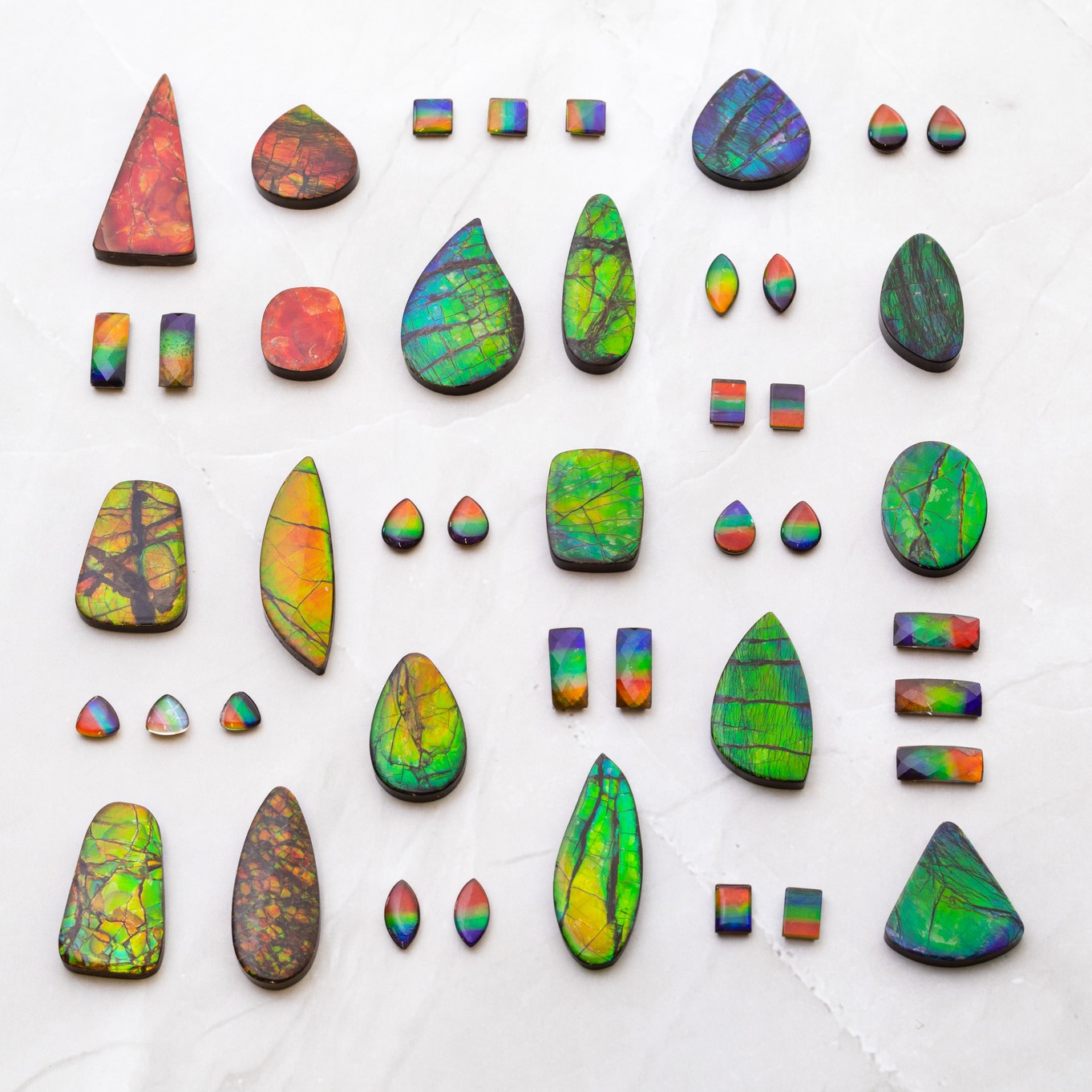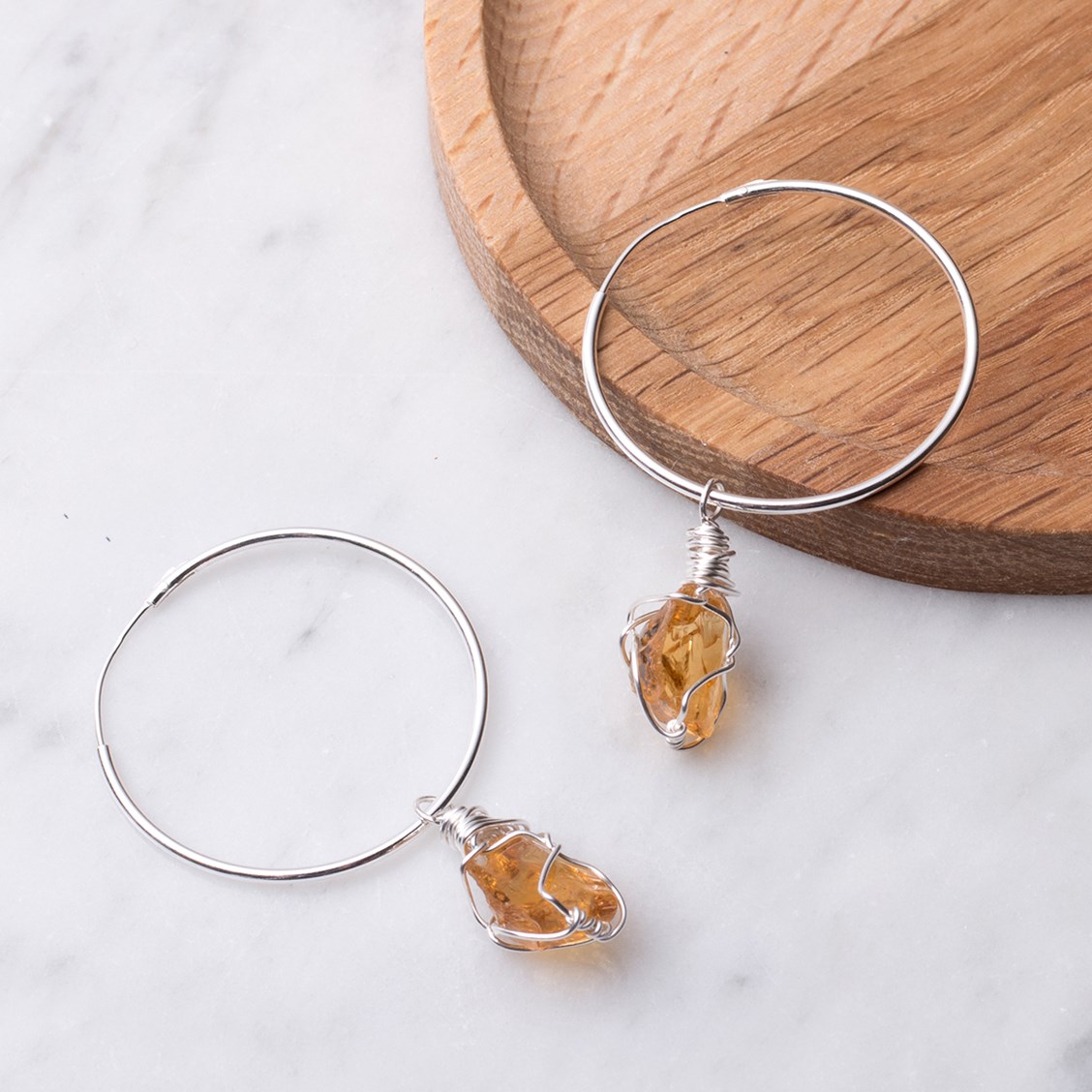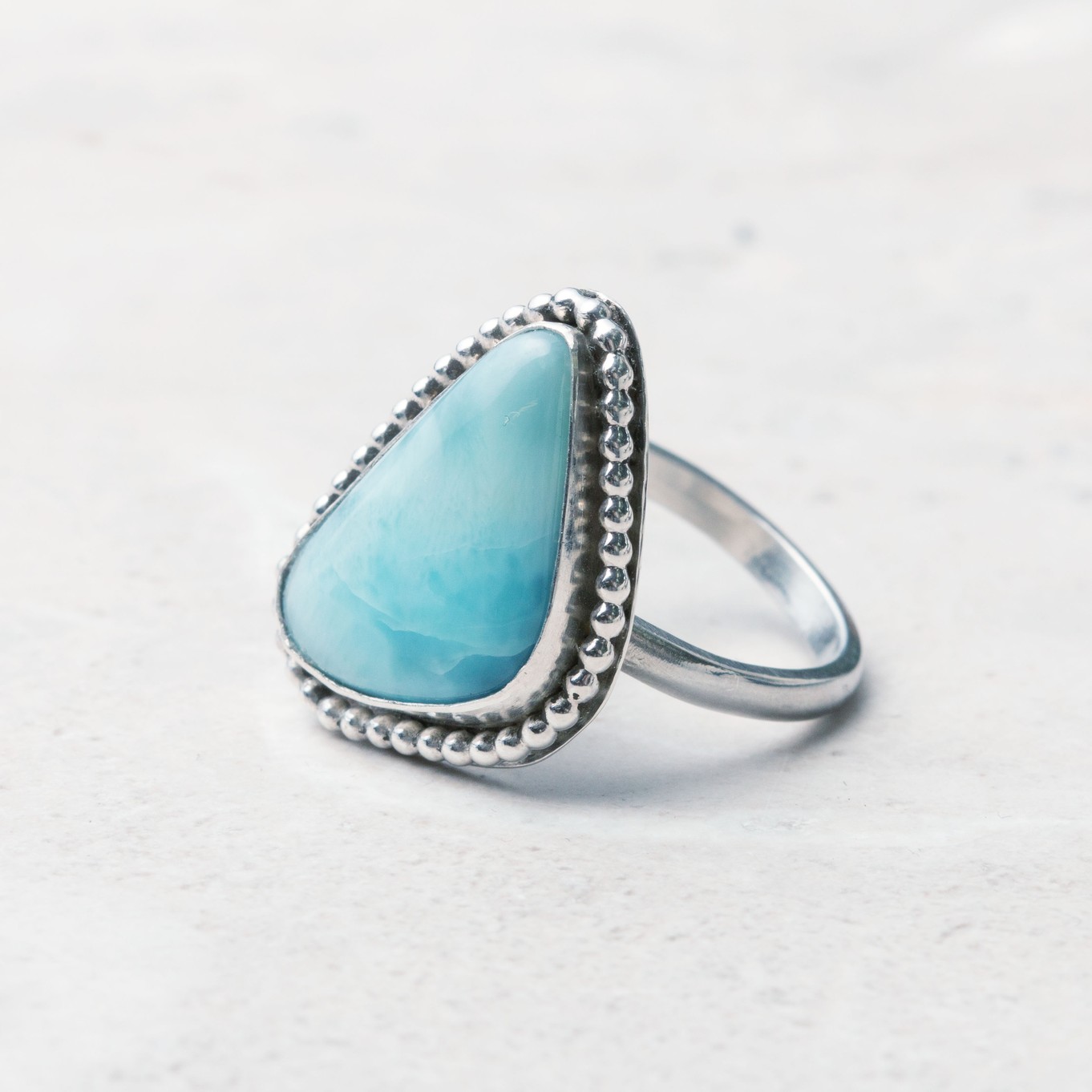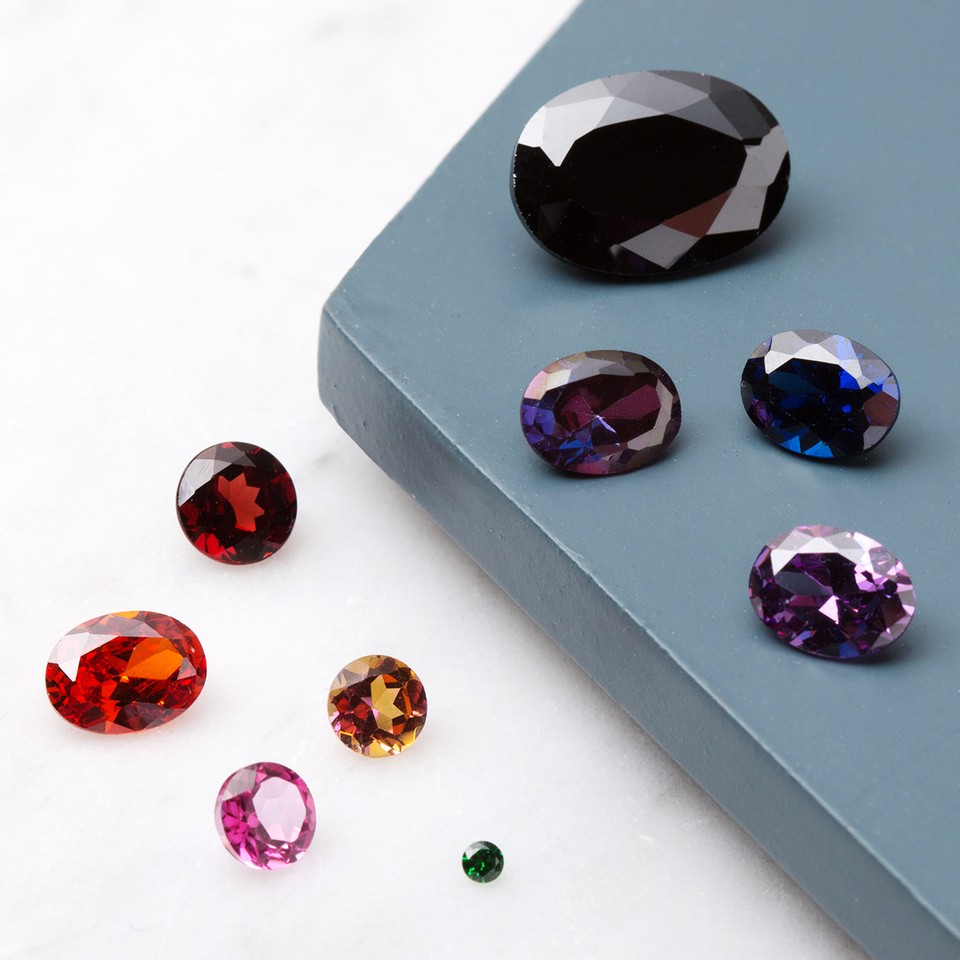Types Of Settings For Free-Form Stones & Crystals
Your chosen stone will determine the type of setting you need to use or make for a piece of jewellery. Cabochons, faceted stones and free-form gemstones will require different settings.
On this advice page we share with you our favourite settings for free-form cabochons, crystals and other irregular shaped stones. We begin with great beginner friendly settings up to more advanced stone setting techniques.
What is a free-form cabochon stone?
Cabochons are shaped and polished to have a domed top and flat bottom. Unlike calibrated cabochons which are made to a specific size and shape to fit standard sized settings, free-form cabochons are not cut to a specific shape or size. Free-form stones are usually cut to maximise the material, this is why they are often very beautiful stones to work with for unique jewellery designs.
Use these techniques with calibrated stones & other free-form materials like sea glass
This page aims to inspire you with our favourite projects using free-form stones and materials however these techniques can also be easily used with calibrated stones too. Sea glass is a popular free-form material which has become increasingly popular in the jewellery making world, that's why many of these tutorials feature sea glass.
At Kernowcraft, we offer a beautiful selection of both calibrated cabochons and free-form cabochons. You will often find our free-form stones in our limited edition category.
Most Popular Free-Form Stones Used In Jewellery Making
Bell Caps
Bell caps are brilliant components that can be used with smaller unusual shaped stones to create charms for earring drops, pendants or to add to bracelets.
Using bell caps requires minimal tools and supplies which makes them perfect for beginners who would like to give jewellery making a try using small crystals or sea glass.
Bell caps come in different styles but many have flexible prongs or claws, which can be easily manipulated to fit your chosen stone. All you need to do is to ensure you have chosen an appropriate sized stone for the bell cap and use Devcon 5 Minute Epoxy Glue to set your stone in place.
Devcon 5 Minute Epoxy
Devcon 5 Minute Epoxy is our favourite glue for gluing stones to settings. Our top tip is to use sandpaper to roughen the metal surface before setting to ensure a stronger bond.
Claw Setting
Claw settings are a popular choice for setting irregular shaped stones and they are a really effective way to show off the beauty of the stone. Below, we share with you our beginner friendly, ready-made claw settings as well as a more advanced step by step tutorial on how to create your own from scratch.
Huggie Settings
If you're a jewellery making beginner wanting to incorporate crystals into your designs, we couldn't recommend our Huggie settings enough!
They are suitable for irregularly shaped stones such as crystals and sea glass, where their flexible claws hold the stone in place.
Our Huggie collection includes a ring setting, earstud settings and a link setting so you can create a whole range of designs.
Watch our video below to see how easy these settings are to use!
Watch How Easy Huggie Settings Are To Use!
How To Make A Claw Setting
This step by step tutorial is aimed at jewellers with stone setting experience and teaches you how to make a prong or claw setting for irregular shaped stone. This project can easily be replicated for calibrated cabochons too!
Wire Wrap
Wire wrapping a cabochon stone or crystal is another great way to transform a stone into beautiful jewellery! As you can see from the wire wrapped examples below, you can really play around with the design to suit your style.
We recommend checking out our wire work tutorials, with plenty of advice, guides and tutorials on using wire to create jewellery designs.
Bezel Setting
Fine Silver Bezel Strip
Bezel strip is used for creating bezel settings for cabochon stones and can be used on irregular shaped stones and crystals too. It's made from fine silver which is slightly softer than sterling silver which makes it lovely and flexible to easily rub over stones to secure them in place.
At Kernowcraft, we offer 2 depths, the 3mm bezel strip is most suitable for smaller stones and wider option is useful for stones with higher domes. If your bezel is too high, you can simply file it down to your desired height.
Designs & Tutorials Using Bezel Strip
Pendant With Backless Bezel Setting
This tutorial walks you through how to make a backless bezel setting using bezel strip which works perfectly for a piece of sea glass.
Set A Stone Onto A Pendant
This is a brilliant project to inspire you! We show you how to solder and set a freeform stone onto a pendant design, which also incorporates a wire wrapped bead too.
Decorative Ring Tutorial
This tutorial and project shows you how you can go that step further by adding decorative elements to your design. This ring uses beaded wire to create a statement design.
Shop Beaded Wire
Beaded wire is ideal for creating stacking rings, creating jewellery findings and for adding decorative elements to your designs. Choose from two diameters, which we will cut to your desired length.
Bezel Made From Metal Sheet
Sea Glass Ring With Bezel Setting
This popular tutorial shows you how to make a ring setting for a piece of sea glass but can be used with another free-form stone of your choice.
Guest tutor Sarah from Seastone Jewellery uses metal sheet to create the bezel but for ease or your preferred preference, you can use bezel strip instead.
Examples of bezel set crystals
An apatite rough crystal bezel set onto a textured silver pendant by Hayley Agar Jewellery
Rough crystal bezel set cuff made by Roses & Whiskey - check out our interview with Jessica here!
Want To Learn More About Making Sea Glass Jewellery?
Jewellery Making With Sea Glass For Beginners
Includes a video showing you easy ways to make sea glass jewellery, with lots of ideas to inspire you.
Drilling & Stone Setting Sea Glass
For more advanced jewellery making with sea glass check out our drilling tutorial, claw and bezel setting tutorials.
Learn More Stone Setting Techniques
Also in this section:
- The Essential Tools For Setting Gemstones
- Your Guide To Stone Setting Burrs For Jewellery Making
- What Is A Bezel Rocker?
- Types Of Settings & How To Use Them
- Types Of Settings For Calibrated Cabochon Stones
- Types Of Settings For Faceted Stones
- Types Of Settings For Free-Form Stones & Crystals
- Calibrated Gemstones & Size Tolerance In Jewellery Making
- Ready Made Settings vs Making Your Own Settings
- 7 Ways To Make Your Own Gemstone Ring
- How To Set Earstuds For Half Drilled Beads
- How to Set Flat Plates and Milled Edge Jewellery Settings
- How To Set Snaptite Settings
- How To Set Gemstones In Gallery Wire Settings
- How To Set Backset Settings
- How To Set Wraptite Settings
- How To Use Huggie Claw Settings For Crystals & Sea Glass
- What Are Bell Caps For Jewellery Making?
- How To Set A Pre-Notched Setting
- How To Set Claw Settings
- How To Make A Decorative Ring Setting For A Free Form Cabochon
- How To Make A Tube Setting For A Faceted Stone
- 4 Drilled Sea Glass Earring Projects
- Jewellery Making With Sea Glass: Drilling & Stone Setting Tutorials
- How To Drill Sea Glass For Jewellery Making
- How Much Bezel Strip/Gallery Wire Do I Need?
- Types Of Bezel Cups
- How to Adjust Bezel Settings to Fit Cabochons
- How To Set A Cabochon In A Bezel Setting
- How To Make A Gemstone Ring With A Bezel Cup
- How To Make A Bezel Set Cabochon Ring With 'Made By Oonagh'
- How To Make A Sea Glass Ring With Bezel Setting
- How To Make Bezel Set Cabochon Earstuds
- How To Make A Sea Glass Necklace With Backless Bezel Setting
- How To Bezel Set A Free Form Cabochon Onto A Textured Silver Pendant
- How To Make A Textured Pendant With A Freeform Gemstone Slice
- How To Make A Claw Set Cabochon Pendant
- How To Make A Prong/Claw Setting For Irregular Shapes Stones
- How to Make A Wire Edged Setting
- How To Make A Balled Claw Ring Setting
- Making An Australian Boulder Opal Pendant With Stardust Mine
- The Process Of Remodelling A Gemstone Ring With 'Honey Bee Design'
HAVE A QUESTION?
If you have any questions, feel free to get in touch with our friendly team who will be more than happy to give you advice over email or on the phone.
You can learn more and find inspiration by visiting our Jewellery Making Tutorials, Jewellery Making Kits and YouTube Channel. Don't forget to follow us on social media and tag us in your designs on Instagram & Facebook, we would love to see!























